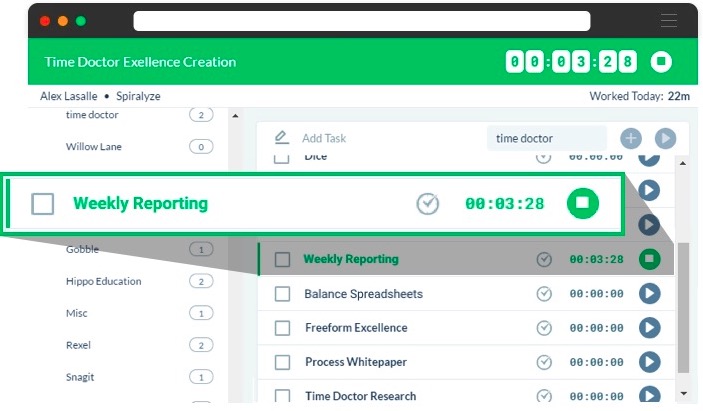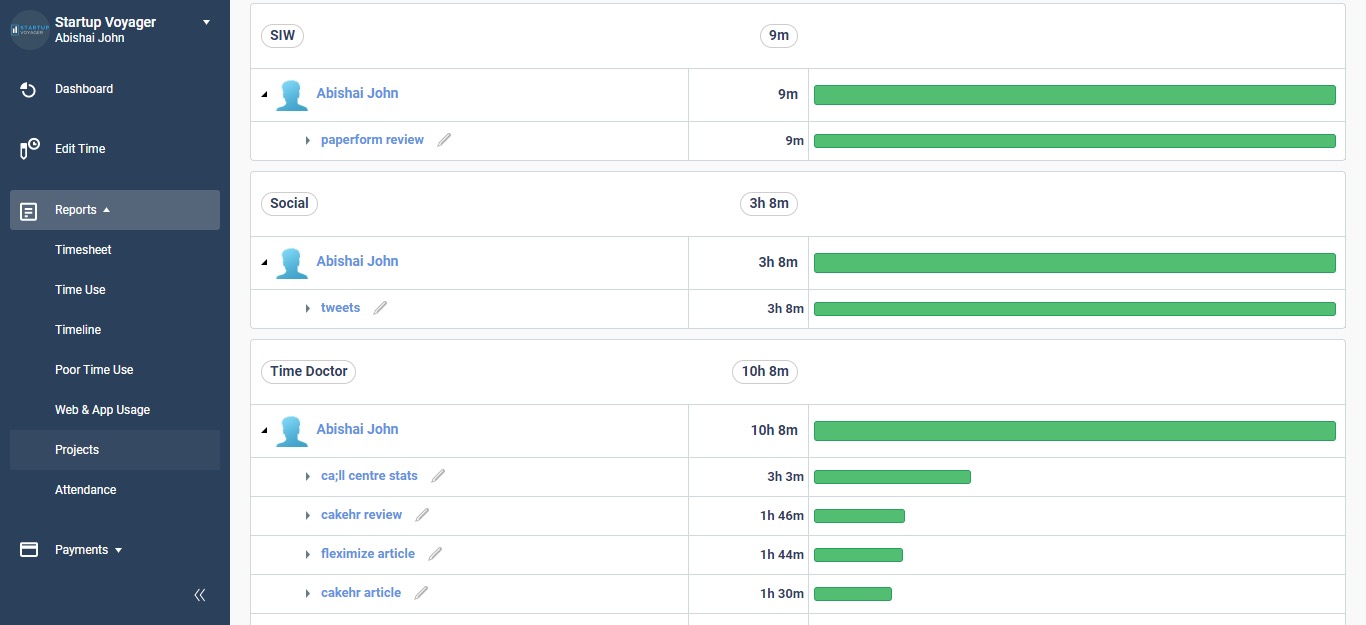Looking to build a remote agency?
With tons of companies embracing the benefits of remote work, opening a remote agency has never been easier! It’ll help you save costs, utilize global talent and generate amazing profit margins!
To help you get started, we’ll go over everything you need to know about building and managing a remote agency.
Here’s what this article contains:
(Click on the links to jump to a specific section)
- The Benefits Of Starting A Remote Agency
- The Drawbacks Faced By Remote Agencies
- How To Set Up And Manage A Remote Agency
Let’s get started.
The benefits of starting a remote agency
Remote agencies wouldn’t be on the rise if they didn’t have any benefits, right?
Here’s a closer look at why starting a remote agency is a smart choice:
1. Lower setup costs
What are two of the steepest costs you’d incur when setting up a regular business?
Rent and overheads, right?
Fortunately, setting up a remote agency can drastically reduce your spend on each of these costs.
As your entire agency is remote, you won’t have a central office space to work from. This way, you won’t have to rent a building to house your employees and business operations.
However, that isn’t all.
Setting up a physical office also means paying for tons of overheads like:
- Electricity.
- High-speed internet.
- Office equipment.
As there’s no office, you won’t have to pay for any of these either!
2. Larger talent pool
One of the key benefits of setting up a remote agency is getting to source talent from across the globe. As your entire business is based online, you’re no longer limited to hiring from your own city and country.
This gives you access to a larger talent pool of qualified workers across the world. As you’re no longer geographically limited, you won’t have to settle for an average employee in the same city as you. Only go for the best – even if they’re 5000 miles away!
But that isn’t the only benefit you get from hiring remote workers.
It can also help you save money.
As wage rates vary across the world, you can hire talented employees from foreign countries at a fraction of the cost. For example, hiring an employee from the Philippines will be far less expensive than trying to hire someone from the United States.
3. Optimized working hours
With a global workforce, you can take advantage of different time zones to get more work done in a day.
For example, while your employees in London are sleeping, your team in the Philippines will be working. This helps your company increase it’s daily active hours – without overburdening your employees.
This makes remote work an incredibly good option for customer support teams as you can provide round-the-clock support without overworking your employees.
4. Increased employee productivity due to improved work-life balance
A big reason for the recent shift to remote work has been the work-life balance benefits that come with it.
As you can work remotely, you won’t have to worry about:
- Your daily work commute.
- Waking up at a certain time.
- Not having any breaks.
In most cases, remote workers dictate their daily schedule. They have a fixed set of deliverables, but it’s up to them to structure their day to get it done.
This allows them to:
- Only work when they’re most productive.
- Benefit from flexible work schedules.
- Take adequate breaks to recharge themselves.
- Balance their work demands with their daily lives.
By giving your employees this much flexibility, you’re increasing their job satisfaction levels. This, in turn, will boost productivity as they can customize their workflows to suit their preferences.

The drawbacks faced by remote agencies
While remote agencies have tons of benefits, there are a few drawbacks you may face when starting one:
1. It’s difficult to communicate and collaborate
This is the biggest problem faced by people in remote jobs.
As your team is spread across different countries, working together can be difficult:
- You won’t have an established office space to brainstorm and work on ideas together.
- You can’t meet your team in person and guide them.
- As you have employees scattered across time zones, finding a time where everyone’s online can be hard.
All your communication has to be done virtually.
The solution
While there’s nothing like working together in real life, there are tons of tools that help bridge this distance barrier.
For example, messaging apps like Slack are great for quick comments and queries. Skype and Zoom let you jump on video calls anytime. Project management tools like ClickUp and Basecamp are also great for getting your virtual teams on the same page when working on projects.
2. Risks associated with a lack of monitoring
Another big issue for remote companies is that it’s difficult to monitor their employees.
As you’re not physically there to monitor what they’re doing, you might not be able to:
- Track the projects they’re working on.
- Track the time they’re spending on projects.
- See if they’re actually working on your projects.
- Identify poor time usage.
The Solution
Luckily, there are tons of employee monitoring tools available today. These tools help you monitor your employees’ activities during work hours to ensure that they remain productive. Here’s a list of the best free employee monitoring tools today.
3. Increased feelings of isolation
While remote work’s flexibility can lead to increased productivity, it can also lead to isolation. As your employees aren’t part of the same office, it’s hard to feel like you’re part of a team.
Think about it.
You don’t see your co-workers everyday, there’s no in-person interaction with your boss, there’s no bonding during off-work hours, the list goes on…
The solution
Have regular video conferences with your team. This helps employees actually see their co-workers and feel like they’re part of a team. You can even set up annual meetups for your remote agency for better bonding.

How to setup and manage a remote agency
Even though your remote agency has no physical office, there’s a lot that goes into setting it up properly:
1. Planning your digital agency
It’s important to clearly map out your business plan and structure before you can start working with your agency. Here’s how to proceed:
A. Decide on your niches
Your niches will determine the:
- The industry focus of your agency.
- The kind of work you undertake.
- The kind of clients you work with.
When starting out, it’s important to zero-in on specific niches for your agency.
Why?
It lets you familiarize yourself with the ins and outs of a particular industry, service and client before branching out.
For example, when starting out, you could decide on providing digital marketing and social media services to small businesses in the real estate industry.
Here,
- Real estate is the industry focus of your agency.
- Digital marketing and social media are the kind of work you undertake.
- Small businesses are the kind of clients you work with.
It’s also important to select your niches based on your prior experience. For example, don’t establish a marketing agency in the medical industry if you have no prior knowledge of the industry and how it works.
If you do, you’ll find it difficult to grasp the intricacies of the industry – delaying how soon you can start your digital marketing agency.
B. Apply for the right licenses
Even though you don’t have a physical office, you may still have to register your remote agency and apply for certain licenses.
The laws covering business registrations vary at the city, state and country level, so be sure to check with all three. It’s a good idea to consult a lawyer or accountant to determine your best course of action and safeguard you against any future legal issues.
C. Decide your pricing structure
Finally, it’s important to settle on a pricing structure for your business. Most companies follow one of these two structures:
1. Package-based
In this model, you create packages of services that you offer clients. As these packages are fixed, you won’t have to undertake any work that isn’t already specified. However, as packages are more expensive, clients may be hesitant to use your services.
2. Hourly-based
Here, you bill your clients by the hour. This gives you a more honest return for your money as you can bill clients for more if their project took longer than expected.
However, if you choose this model, it’s important to have a time tracker like Time Doctor that accurately logs the hours you spend on projects to bill your clients accurately.
Here is everything about billable hours and how to track them.
2. Maintaining productivity
As you can’t monitor your employees in person, maintaining productivity in a remote agency can be difficult.
However, it isn’t impossible.
Here are a few tips on how a project manager can maintain productivity at a remote agency:
A. Use a productivity monitoring tool
The easiest way to maintain productivity at your remote agency is by using a productivity monitoring tool like Time Doctor.

Time Doctor is a performance monitoring tool used by companies to monitor their employee’s work processes and boost their productivity.
With Time Doctor, you can:
- Monitor what your employees are doing during work hours.
- Keep track of the sites and apps they visit during work hours.
- Manage distractions to keep your employees actively working on their assignments.
- Use the Projects Report to track the time they spend on specific projects and tasks.

- Access accurate time tracking records to bill clients for hours worked.
- Identify time-wasters and intervene to boost their productivity levels.
- Integrate with apps like Slack, Google Apps, GitHub and Zapier.
Here’s a detailed look at all of Time Doctor’s features.
B. Implement systems
You must consistently implement systems surrounding:
- The standards of work expected.
- The sequence of project activities.
- The project review processes.
Why?
Standardized systems compensate for the lack of communication and active collaboration in remote teams. As everyone already knows what they have to do, they won’t be waiting around for instructions.
The system is already in place – they just have to follow it!
This will reduce down-time between project stages and will keep your team productive 24×7!
3. Hiring the right people
At the end of the day, your employees will make or break your company.
If they’re not committed and motivated to grow your business, it won’t go anywhere.
Here are a few hiring tips to implement after placing your opening on job boards.
A. Hire employees on a part-time basis
Before hiring someone full-time, consider hiring them on a part-time basis first.
This will help you gauge how well they cope with the job demands and mesh with your company culture.
In case they have trouble churning out deliverables or are distracted on the job, they’re not a good fit and you can quickly move on to another candidate.
Alternatively, you can hire experienced freelancers from agencies like TopTal for your remote position. As these are freelancers who are already vetted, you won’t have any performance issues with them.
B. Look for people with prior remote work experience
Remote working is a big departure from traditional work setups.
People used to traditional working methods may find it hard to fully cope and embrace remote working. Remember, the added flexibility and convenience of remote work comes with added responsibility and self-discipline.
That’s why it’s a good idea to prioritize employees who have had some experience with remote work before. Go through their Linkedin profiles and see if they’ve worked for a remote digital agency before. If they have, they’ll know what’s expected and can easily cope with your remote working demands.
C. Create a standard onboarding process
By creating a standardized onboarding process, you’re making it easier for new hires to get the training they need to get working immediately.
Your onboarding process can contain instructional videos about your work, the tools you use and the deliverables expected, to familiarize new hires with what goes on at your agency. This way, you don’t have to waste time manually handling every new hire – let your process do it for you!
4. Communicating efficiently
While communication can be difficult for remote teams, it doesn’t always have to be the case.
Here are a few ways to facilitate efficient communication in you remote agency:
A. Establish a time zone overlap
The biggest barrier to communication in remote teams is time zone differences.
You can’t have one employee trying to communicate with a co-worker when it’s 3 AM for them, right?
That’s why it’s a good idea to identify time zone overlaps where everyone in your agency is online. For example, your employee in India can get online at 7:00 PM to communicate with your employee in New York, where it’ll be 9:30 AM.
This allows them to communicate for a bit everyday when it’s convenient for both of them. They can go over daily updates and project developments quickly to get things done effectively.
B. Use the right communication tools
It’s important to use the right tools to compensate for the lack of in-person interaction at your remote agency.
Here are a few types of tools you should invest in:
- Instant messaging tools: These tools help your team quickly comment on project tasks and developments to get instant feedback. Ex – Slack,Fleep
- Video conferencing tools: These tools allow you to conduct video meetings with your team for more detailed breakdowns and brainstorming sessions. Ex – Zoom, Skype, Google Meet.
- Screen sharing tools: These tools help you share your screen with other team members and also allow them to control another computer remotely. Ex – TeamViewer, Join.Me.
- Chat room tools: These tools help your employees let off steam and talk about non-work related things. It’s great for building camaraderie; however too much time here can be unproductive. Ex – HipChat.
C. Create regular meeting schedules
Another good way to maintain good communication at your agency is by conducting regular meetings.
You can either opt for:
- Daily briefings with your team.
- Weekly update meetings.
- Monthly reviews.
Conducting these meetings at regular intervals creates a communication pattern at your agency that everyone can get used to.
Conclusion
Setting up a remote agency can be initially confusing, but in reality, it isn’t that hard.
With the right planning, hiring and tools, you’ll have everything you need to get your remote agency up and running in no time.
It’s clear that performance monitoring tools like Time Doctor are invaluable to remote agencies, so why not sign up for it today and experience it yourself?

Liam Martin is a co-founder of Time Doctor which is software to improve productivity and help keep track and know what your team is working on, even when working from home.


